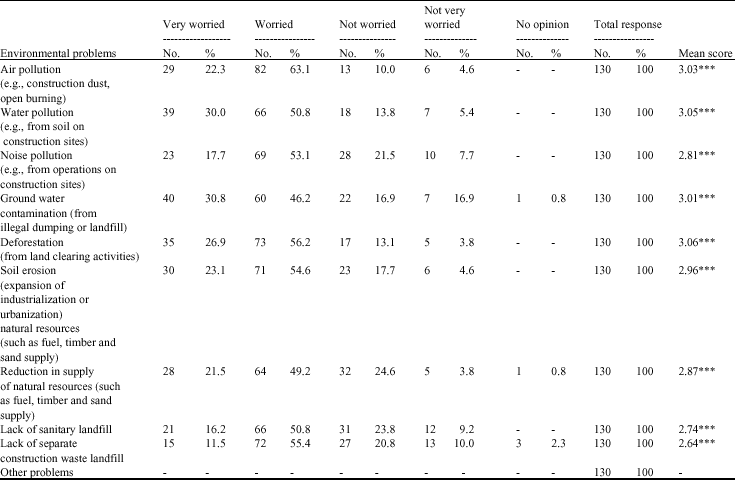Research Article
Environmental Problems in Malaysia: A View of Contractors` Perception
Institute for Environment and Development (LESTARI), Bangi 43600, Universiti of Kebangsaan Malaysia, Selangor D.E., Malaysia
Joy Jacqueline Pereira
Institute for Environment and Development (LESTARI), Bangi 43600, Universiti of Kebangsaan Malaysia, Selangor D.E., Malaysia









